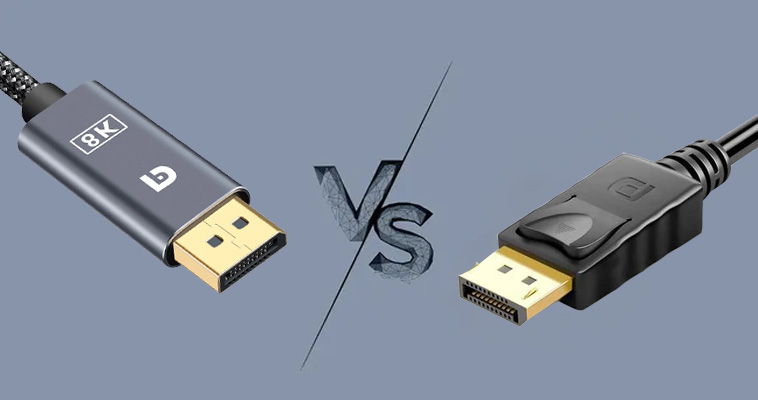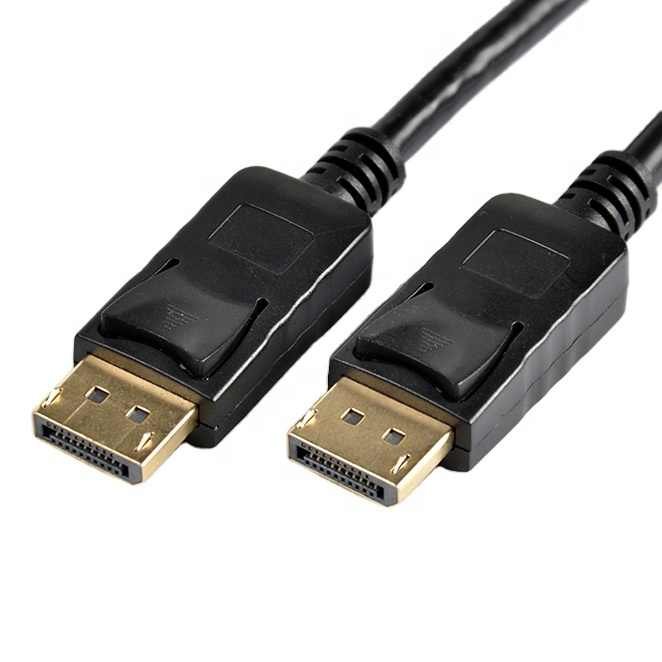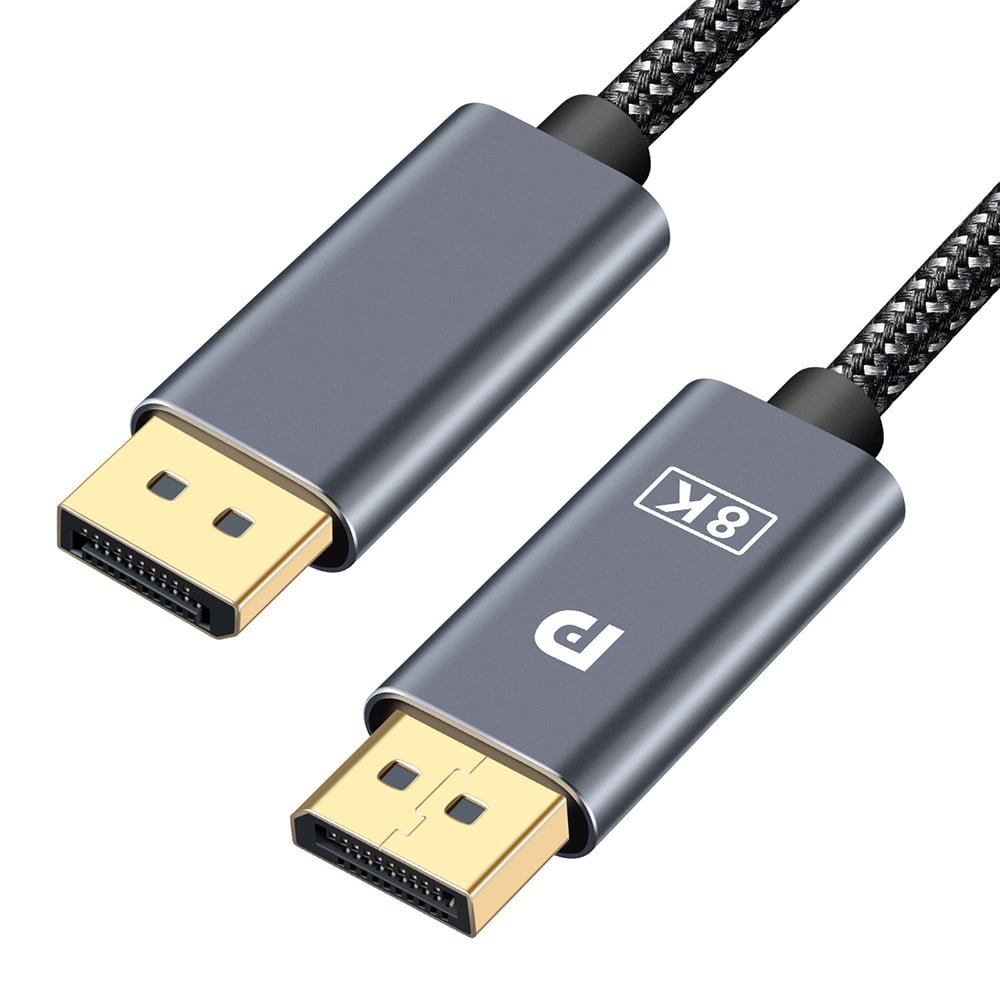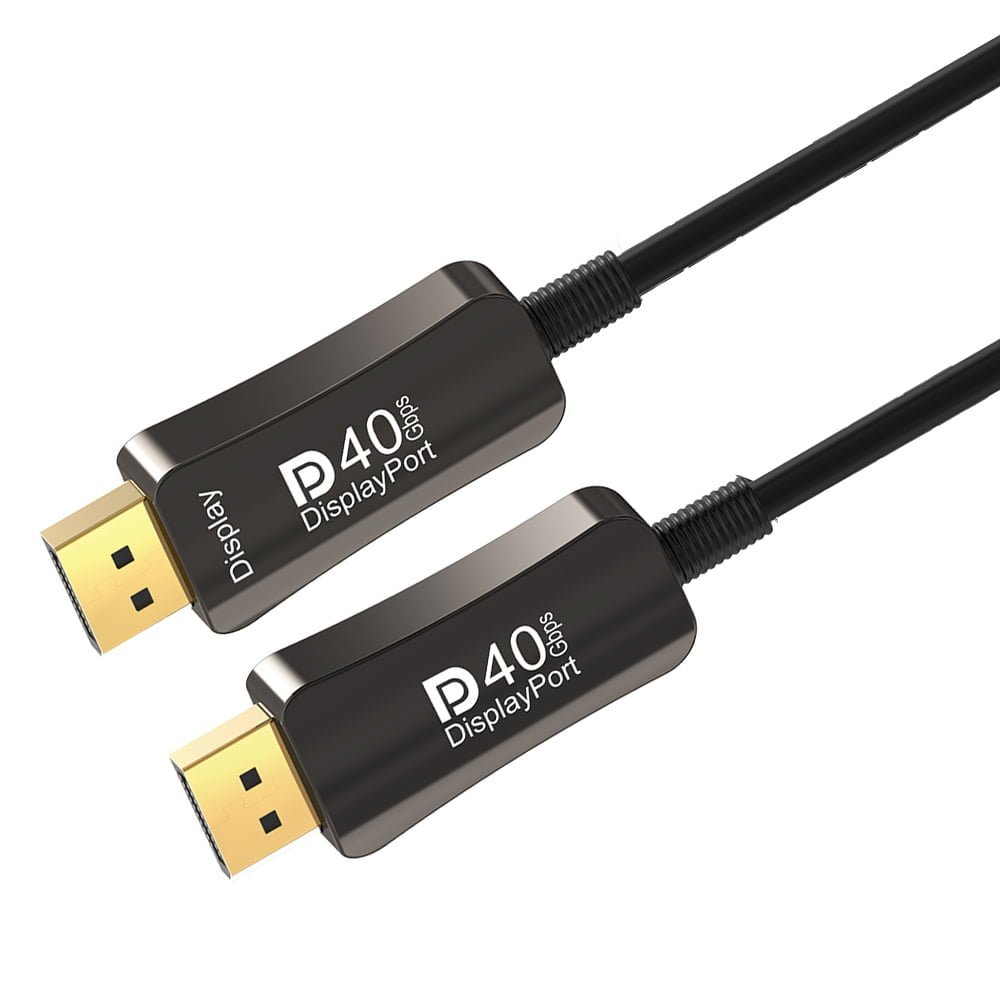Dp 1.4 frente a Dp 2.0: Una explicación detallada
Dp 1.4 Vs Dp 2.0 A medida que las pantallas de alta resolución se hacen más populares en las empresas, la elección de una Cable DisplayPort que admita 4K o incluso Pantalla 8K es crucial para garantizar los efectos de visualización y el rendimiento del dispositivo. En este artículo se explican las diferencias entre DisplayPort 1.4 y 2.0 y ofrecer recomendaciones de compra a las empresas.
Introducción
DisplayPort (abreviado DP) es una interfaz de pantalla digital desarrollada por VESA (Video Electronics Standards Association), que se utiliza principalmente para conectar monitores a ordenadores, tarjetas gráficas u otros dispositivos fuente de vídeo. Se ha convertido en una de las principales interfaces de pantalla por su gran ancho de banda y versatilidad.
Comparación entre DP 1.4 y DP 2.0
| Característica | DisplayPort 1.4 | DisplayPort 2.0 |
| Ancho de banda máximo | 32,4 Gbps | 80 Gbps |
| Resolución y frecuencia de actualización compatibles | - 4K a 120 Hz - 8K a 60 Hz |
- 4K a 240 Hz - 8K a 120 Hz - 16K a 60 Hz |
| Estándares HDR compatibles | HDR10, Dolby Vision | HDR10, Dolby Vision, compatibilidad con mayor rango dinámico |
| Tecnología de compresión | DSC 1.2(Compresión de flujos de visualización) | DSC 1.2 (más eficiente) |
Diferencias clave:
- Ancho de banda: DisplayPort 2.0 tiene más del doble de ancho de banda que la 1.4, lo que permite mayores resoluciones y frecuencias de actualización.
- Salida multipantalla: 2.0 es más potente a la hora de soportar conexiones multipantalla en cadena, lo que resulta idóneo para escenarios en los que las empresas necesitan pantallas múltiples.
- Compatibilidad futura: Si la empresa tiene un plan de implantación a largo plazo, la 2.0 es más previsora.
Cómo elegir un Cable DP?
Determinar los requisitos de visualización
- Pantalla 4K: Elija cables que admitan DisplayPort 1.4 y superiores para garantizar una visualización fluida de 4K a 60 Hz o una frecuencia de actualización superior.
- Pantalla 8K: Dé prioridad a los cables que soportan el DisplayPort 2.0 para garantizar un gran ancho de banda compatible con la resolución 8K y una mayor frecuencia de actualización.
Compruebe la compatibilidad del dispositivo
- Compruebe la versión de la interfaz DP del monitor y de la tarjeta gráfica. Aunque Cables DP son compatibles con versiones anteriores, las capacidades del cable se basan en la versión más baja. Por ejemplo, si el dispositivo sólo admite DP 1.4no puede aprovechar todo el rendimiento de DP 2.0.
Preste atención al marcado del ancho de banda
- Cable DP estándar: Certificado VESA, que garantiza la estabilidad del ancho de banda.
- Cable de fibra DP: adecuado para transmisiones a larga distancia, como salas de conferencias, salas de exposiciones, etc., para evitar la atenuación de la señal.
Soporta HDR y tecnología de compresión
- Si su empresa requiere pantallas de alto rango dinámico, asegúrese de que el cable es compatible con la tecnología DSC 1.2 (la compresión no afecta a la calidad de imagen).
Confirmar los requisitos de longitud
- Los cables DP estándar suelen funcionar mejor en un radio de 2 metros. Si la longitud es superior, es posible que tengas que elegir un cable DP de fibra óptica o un producto con amplificación de señal.
Recomendación de compra para empresas
- Productos con certificación VESA: Da prioridad a los cables DisplayPort con certificación VESA para garantizar la compatibilidad y la fiabilidad.
- Alta prioridad de ancho de banda: Aunque de momento solo necesites una pantalla 4K, se recomienda elegir cables compatibles con DP 2.0 para mejorar la compatibilidad futura del dispositivo.
Resuma
La selección de cables DisplayPort compatibles con pantallas 4K y 8K debe combinarse con los requisitos de resolución de la empresa, la versión de interfaz del dispositivo y los requisitos de distancia de transmisión. Para las empresas con presupuesto suficiente y que persiguen visión de futuro, DisplayPort 2.0 es sin duda la mejor opción; mientras que las empresas que solo necesitan satisfacer las necesidades actuales pueden elegir cables DP 1.4 con un rendimiento excelente. En cualquier caso, asegúrese de adquirir productos que cumplan los requisitos de certificación y ancho de banda para proporcionar una protección estable a la pantalla de alta resolución.










